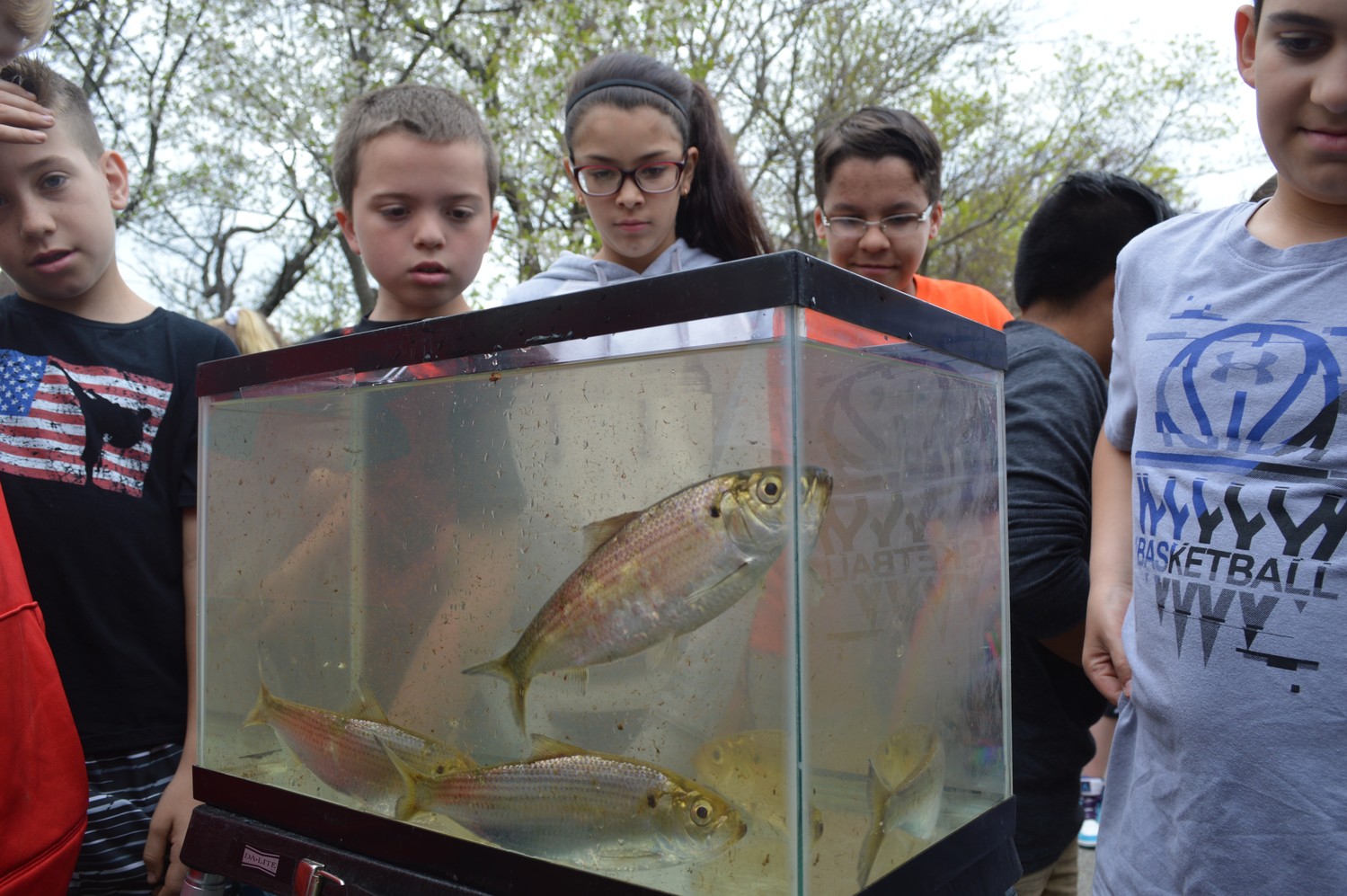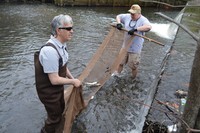Environmentalists give Mill River fish a lift
Schools of fish traveled miles across the ocean to mate in Rockville Centre’s freshwater, only to reach an impasse in the form of a dam. Wildlife experts gave some of them a lift last week.
Each spring, river herring, one of the Hudson River’s anadromous fish, migrate from the ocean to inland streams such as Smith Pond. But a dam in Mill River separates them from their final destination.
“They can’t leap; they’re not salmon,” said volunteer Pat Devine, adding that the fish get stuck in what is called brackish water, a combination of saltwater and freshwater.
The Islip-based Seatuck Environmental Association stepped in on May 4 to net as many river herring as possible and hoist them into Smith Pond, a yearly task. The not-for-profit organization dedicated to promoting the conservation of Long Island’s wildlife and environment also has nature centers in East Islip and East Setauket.
“These fish are a cornerstone species for our entire ecosystem,” said Enrico Nardone, executive director of Seatuck. River herring transport “ocean energy” into the local environment, he added, as food for other wildlife — like fish, such as bluefish and striped bass; animals, like seals and otters; and birds, such as ospreys and eagles in Rockville Centre.
The fish provide a “cascade of ecological benefits,” Nardone said. The reason they journey all the way here — and get eaten along the way — is to spawn, which will in turn create more food for larger species.
“Life is a bitch for them the whole way through,” Mario Bento, an engineer for the Village of Rockville Centre’s parks department, said frankly of the river herring. He finds their role exciting though, noting, “Wildlife is key here in Long Island.”
At the event, volunteers and Seatuck workers captured some river herring into buckets and tanks for local schoolchildren to examine up close, and even hold. “It’s all about connecting people to where they live, and helping them understand how it all fits together,” said Peter Walsh, director of the education department at Seatuck.
Sixth-grader Everett Gamache, who enjoys bird-watching, and classmate John O’Hanlon, who likes fishing, already understand a whole lot, and collectively agreed to help the environment. “If we work hard, we can fix all of this pollution,” Gamache said.
“Now I know there are a lot of fish in the area,” O’Hanlon chimed in. “I found a new spot to fish!”
Seatuck members said they will continue carrying the fish over the dam until a “fish ladder,” a staircase of water over the dam connecting Mill River and Smith Pond, is established. The Governor’s Office of Storm Recovery is funding the project, as part of its Living With The Bay initiative.
A building permit must still be authorized, according to Heidi O’Riordan, an aquatic biologist for the Department of Envrionmental Conservation, who added that the project has “no opposition.”









